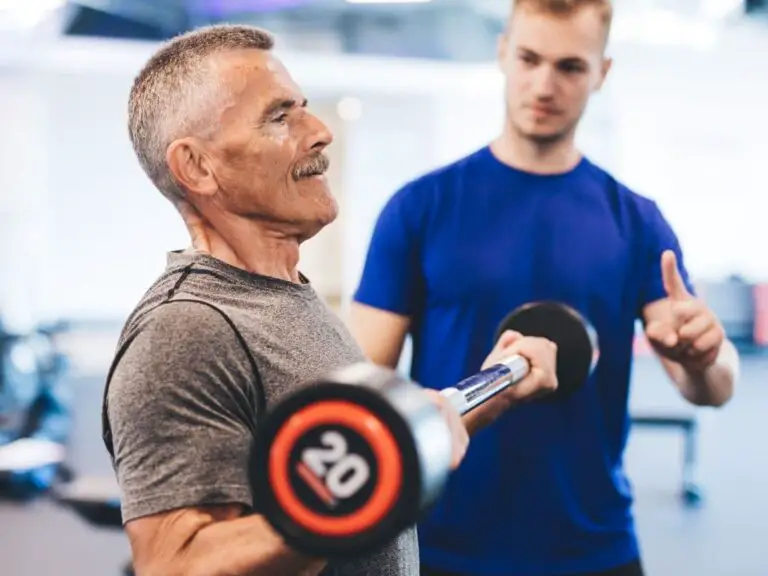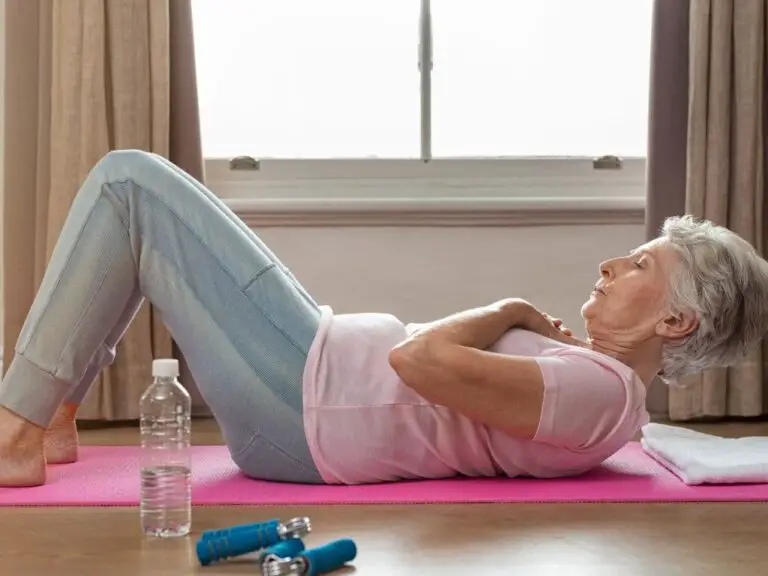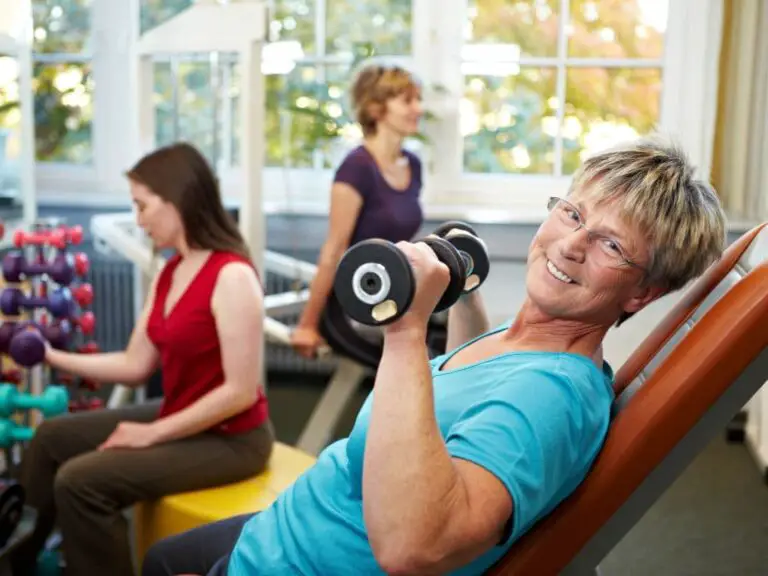Can a 67 Year Old Woman Get in Shape?
Yes, a 67-year-old woman can certainly get in shape. By incorporating a balanced mix of low-impact exercises, strength training, cardio, yoga or Pilates, and regular walking or hiking, a woman of this age can improve her overall fitness level, mobility, and strength. However, it’s important to consult with healthcare professionals before starting a new fitness regime, to ensure the exercises are safe and effective, considering any existing health conditions.

Understanding the Importance of Staying Active at 67
As women age, it becomes increasingly important to maintain an active lifestyle. While some age-related changes are inevitable, engaging in regular physical activity can help promote strength, balance, and mobility into the later years. Starting or sticking to an exercise routine at age 67 has many proven health benefits, both physical and mental.
Some of the key reasons why women over 67 should make fitness a priority include:
- Building bone density – Weight-bearing and resistance exercises help stimulate bone formation, reducing the risk of osteoporosis.
- Maintaining muscle mass – Without regular exercise, muscle mass naturally begins to decline with age. Keeping fit helps preserve strength.
- Boosting balance – Activities that improve balance help prevent falls, a common cause of injury for older adults.
- Supporting joint health – Keeping joints moving freely can help reduce arthritis symptoms and joint stiffness.
- Promoting heart health – Aerobic fitness exercises improve cardiovascular function and help manage issues like high blood pressure.
- Controlling weight – Staying active is key to maintaining a healthy weight and avoiding obesity-related diseases.
- Reducing stress – Exercise helps normalize cortisol and has positive effects on mental health.
- Slowing cognitive decline – Physical activity may help improve memory and reduce age-related cognitive issues.
Staying motivated to exercise can be challenging at any age. But the potential gains make it well worth the effort for women over 67.
How Can a 67-Year-Old Woman Get in Shape?
While every individual is different, there are some general guidelines and tips to help a 67-year-old woman start an exercise regime and improve her overall fitness level. It’s important to choose activities that are safe, enjoyable, and appropriate for your current ability level.
Starting with Low-Impact Exercises
For older women who are relatively inactive, beginning with low-impact activities allows the body to adjust to regular exercise. Great options include:
- Walking – A daily walk, even just around the block, can significantly boost activity levels.
- Water workouts like swimming, water aerobics, or water walking – The water supports joints while providing resistance.
- Chair exercises – Seated routines improve mobility without taxing the body.
- Yoga or tai chi – Gentle practices build strength and improve balance and flexibility.
Starting gradually and alternating higher and lower intensity activities can aid progress while reducing soreness and injury risk.
Incorporating Strength Training
Building muscle becomes crucial for maintaining mobility and function as women age. Strength training at least 2-3 times per week can help prevent loss of muscle mass. Options include:
- Bodyweight exercises like squats, crunches, or pushups. Start with modified versions if needed.
- Using resistance bands or light weights for arms, shoulders, legs, etc.
- Functional fitness equipment like small balls and balance boards.
- Taking a strength training class geared toward older adults.
Aim for 8-12 repetitions to effectively build muscle without straining. Allow 48 hours between working the same muscle groups.
Making Cardio a Regular Part of the Routine
Aerobic activity delivers oxygen and nutrients to tissues while keeping the heart fit. Aim for at least 150 minutes of moderate cardio per week, such as:
- Walking – Gradually build up to brisk daily walks of 30-60 minutes.
- Stationary bike – Low-impact and adjustable for any fitness level.
- Water aerobics – Provides cardio benefits without stress on joints.
- Dancing – Fun cardio option to try line dancing, ballroom, etc.
- Light jogging – If knees allow, start with short intervals mixed with walking.
Check heart rate occasionally to keep effort in the moderate zone – 50-70% of maximum heart rate.
Trying Out Yoga or Pilates
Yoga and Pilates are excellent options for older women looking to improve not just fitness, but also balance, mental focus, and stress management. Beginner classes for seniors are widely available. When practiced safely, benefits include:
- Increased flexibility and range of motion.
- Strengthening of core and stabilizer muscles.
- Improved posture and bodily awareness.
- Mind-body benefits like reduced anxiety.
Starting with gentler styles like Hatha, Iyengar, or chair yoga allows the body to adapt and gain confidence before progressing.
Engaging in Regular Walking or Hiking
One of the simplest ways for 67-year-old women to rack up exercise minutes is by making brisk walking a habit. This low-impact activity has many benefits:
- Requires no equipment and can be done most anywhere.
- Provides moderate cardio, aids weight control.
- Strengthens bones without high impact.
- Improves mood and reduces stress.
- Boosts energy levels.
Aim for 30-60 minutes daily, or break sessions into two 15-30 minute segments. Trail hiking offers varied terrain to further challenge stability and build leg strength.
What Are Some Safe and Effective Exercises for a 67-Year-Old Woman?
When developing an exercise program, it’s important to select activities that stimulate physical improvement while avoiding injury. Recommended options include:
Chair Squats
- Improves lower body strength.
- Adds muscle mass.
- Enhances balance.
- Relieves joint strain.
Leg Lifts
- Targets hip flexors and quadriceps.
- Assists with gait and stability.
- Can be done standing or lying down.
Walking
- Provides light cardio exercise.
- Helps control blood pressure and blood sugar.
- Boosts bone density and spatial memory.
Gentle Yoga
- Focuses on flexibility, breathing, and balance.
- Can be tailored to any ability level.
- Benefits both mind and body.
Swimming
- Non-weight-bearing and gentle on joints.
- Works all major muscle groups.
- Provides an aerobic and strength workout.
Always warm up muscles prior to exercise and start new activities gradually. Stretching after workouts can aid recovery. Remember to listen to your body and take rest days as needed.
How to Maintain a Healthy Diet at 67
Along with staying physically active, eating a nutritious diet is key for women’s health after age 67. A balanced eating plan should include:
- Plenty of fruits and vegetables – They provide vitamins, minerals, fiber and antioxidants.
- Lean proteins like fish, skinless poultry, beans, eggs and low-fat dairy – Important for preserving muscle mass.
- Whole grains for fiber, B vitamins, iron and magnesium.
- Heart-healthy fats from fatty fish, nuts, seeds and avocados.
- Staying adequately hydrated by drinking water and other fluids regularly.
Some tips for healthier eating include:
- Controlling portion sizes to keep calories in check.
- Limiting processed foods, sugar, salt and saturated fats.
- Making half your plate fruits/vegetables for nutrients.
- Choosing whole grain bread, pasta, oats and brown rice.
- Drinking eight 8-ounce glasses of fluids daily.
Meeting nutritional needs can help women over 67 maintain energy levels and a healthy weight.
The Importance of Staying Hydrated
Proper hydration is crucial yet often overlooked in older adults. Some key reasons for women over 67 to drink adequate fluids:
- Thirst sense declines with age, so relying on thirst alone is insufficient.
- Dehydration can exacerbate medical issues like constipation, blood pressure dysregulation, and urinary tract infections.
- Keeping hydrated aids mental acuity, boosts mood, and reduces fatigue.
- Water helps regulate body temperature during exercise.
- Fluids support muscle and joint health and help minimize cramps and strains.
- Kidney and gastrointestinal function depends on good hydration.
How much fluid is optimal? Experts suggest around eight 8-ounce glasses daily as a minimum. Increase intake with exercise and hot weather. Sources like water, milk, fortified juices and decaf tea all help meet needs. Soups and fruits also contribute to fluid intake.
Urinary frequency and color can serve as quick checks on hydration status day to day. Supporting hydration helps women’s bodies work efficiently.
How to Stay Motivated to Keep Fit at 67
Starting an exercise plan is one thing – sticking with it long term is another. Some strategies women can use to stay motivated as they age include:
- Setting specific goals – Rather than general goals like “get in shape,” identify targets like walk 30 minutes 5 days per week.
- Exercising with others – Walking or taking classes with friends adds social motivation.
- Tracking progress – Use a journal, app or wearable to monitor improvements in endurance, strength, flexibility, etc.
- Varying workouts – Prevent boredom by regularly trying new activities.
- Focusing on overall gains – Such as better sleep, ache reduction, boosted confidence and energy.
- Having fun – Most people stick with activities they enjoy – make fitness playful.
- Being patient – Progress can take time. Avoid dwelling on setbacks.
With creativity and commitment, women can make fitness routines a vital part of healthy aging.
Consulting with Healthcare Professionals Before Starting a New Fitness Regime
For older adults with medical issues, having a discussion with doctors prior to significantly increasing physical activity is wise. Some reasons include:
- Identifying any exercise restrictions given your health conditions. Aerobic, strength or balance training may need to be adapted.
- Learning about safe heart rate zones if cardiovascular disease factors are present.
- Taking any prescribed medications into account – some impact heart rate or hydration.
- Getting guidance on types of exercises or activities to focus on for issues like osteoporosis or joint conditions.
- Having blood pressure and other vitals monitored periodically to watch for any issues.
- Discussing options like supervised programs or physical therapy if balance or mobility is limited.
- Reviewing topics like footwear, sun safety, hydration and use of assistive equipment if needed.
The goal is to create the most personalized, safe and effective fitness regimen possible to meet your needs and health profile. Being active should be enjoyable, so working with providers helps identify any special considerations.
How Can Fitness Help Improve Overall Health for Women Over 67?
Regular physical activity provides a wide spectrum of health benefits that become increasingly vital for women as they age, including:
- Boosting aerobic fitness
- Helping manage heart disease risk factors like obesity, hypertension and high cholesterol.
- Building bone density Reducing risk of fractures and osteoporosis. Preserving muscle mass
- Maintaining strength needed for daily activities.
- Improving balance and stability.
- Limiting risk of falls and injuries.
- Controlling blood sugar levels and insulin sensitivity.
- Slowing age-related declines in memory and focus.
- Easing symptoms of chronic conditions like arthritis.
- Reducing anxiety and depression and improving mood.
- Promoting better sleep quality.
With appropriate guidance and the right mix of low- and moderate-intensity activities, women over 67 can achieve meaningful improvements in both physical abilities and long-term wellbeing. The key is tailoring a program that is safe, effective, and sustainable.






